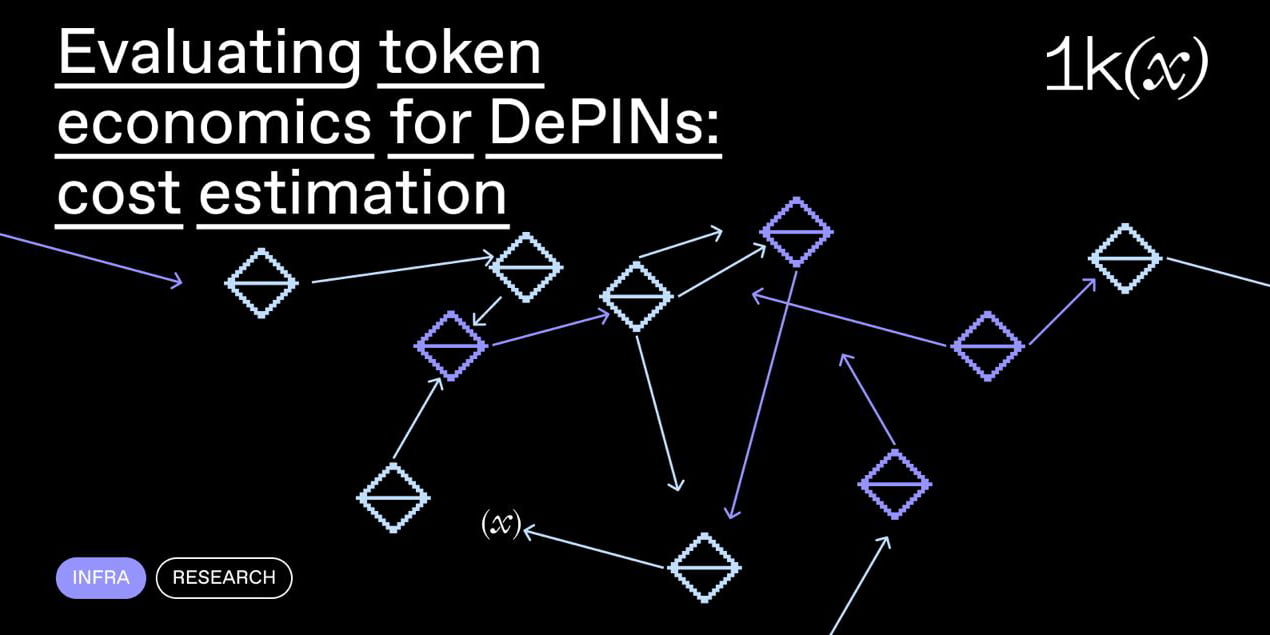Research Summary
The report provides an in-depth analysis of Decentralized Physical Infrastructure Networks (DePINs), focusing on their cost structures, operational dynamics, and financial sustainability. It explores various DePINs, including Livepeer, POKT Network, ICP, and DIMO, and presents a proposed framework for assessing operational costs. The report also discusses the role of token rewards and the impact of market sentiment on the financial viability of node operators.
Key Takeaways
Significance of DePINs and Their Market Capitalization
- Role and Value of DePINs: DePINs are crucial for the operation of nodes that provide hardware resources for various use cases, including compute, storage, and wireless networks. As of May 2024, the market capitalization of all DePIN tokens stands at $29 billion, highlighting the significant financial scale of these networks.
Operational Costs and Sustainability of DePINs
- Threat to DePIN Sustainability: The sustainability of DePINs is threatened if node operation becomes unprofitable, leading to a potential decrease in node supply and network degradation. To prevent this, it is crucial for DePIN founding teams to optimize costs for node operators, ensuring their continued participation and the network’s longevity.
DePIN Cost Framework 1k(x)
- Cost Estimation Framework: The proposed DePIN Cost Framework 1k(x) aims to help network stewards estimate costs by defining network contributors, identifying cost components, and considering cost structure differences. This framework provides a detailed cost breakdown per role and component, enabling the identification of major cost drivers and informing governance discussions and R&D efforts.
Impact of Market Sentiment on Token Rewards
- Market Sentiment and Token Rewards: The value of token rewards is significantly influenced by market sentiment, which can fluctuate, affecting the dollar value of these rewards and, consequently, the financial viability for node operators. If token rewards and income from network use do not cover operational costs, node operators may cease their support, potentially degrading network performance and user experience.
Operational Cost Analysis of Various DePINs
- Cost Analysis of DePINs: The report provides a financial analysis of various DePINs, including Livepeer, POKT Network, ICP, and DIMO, focusing on their cost structures, operational dynamics, and financial sustainability. The analysis includes considerations for shared economy benefits and assumes zero hardware cost if devices like smartphones or laptops are not specifically purchased for network support.
Actionable Insights
- Optimizing Operational Costs: DePIN founding teams should focus on optimizing operational costs to ensure the financial sustainability of node operators. This could involve switching to more cost-effective platforms, as exemplified by Livepeer’s decision to switch from Ethereum to Arbitrum, reducing settlement costs by over 95%.
- Understanding Cost Structures: Network stewards should utilize the proposed DePIN Cost Framework 1k(x) to understand and manage the operational costs of running infrastructure nodes. This will help identify major cost drivers and inform governance discussions and R&D efforts.
- Monitoring Market Sentiment: It’s crucial to monitor market sentiment as it significantly influences the value of token rewards. Fluctuations in market sentiment can affect the financial viability of node operators, potentially leading to network degradation.
- Exploring New Use Cases: DePINs should explore new use cases for additional monetization. For instance, the Livepeer Network has expanded to utilize idle GPU resources for AI model training, presenting a potential avenue for additional income.
- Assessing Market Opportunities: DePINs should assess market opportunities for potential revenue generation. For example, DIMO, which enables drivers to manage their vehicle data, could potentially generate significant income by capturing a portion of the global market for car data.











